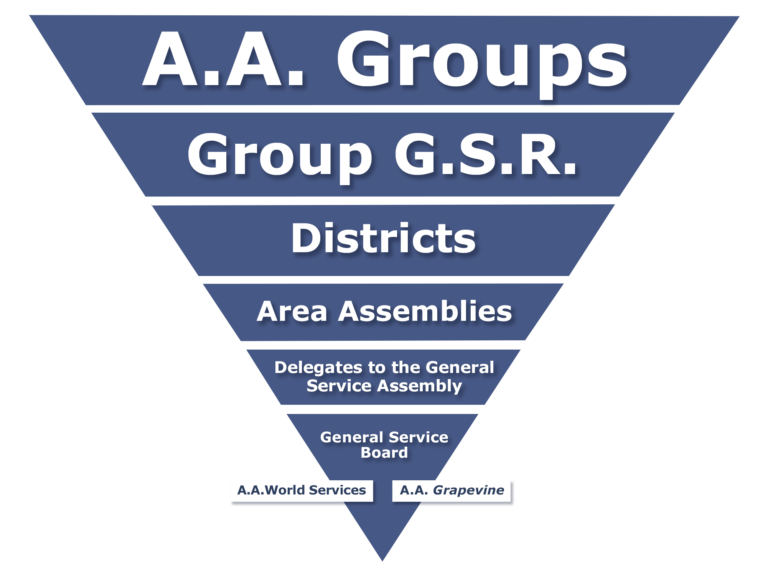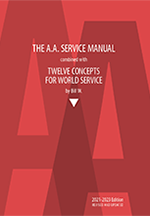
Service Resources
The A.A. Service Manual opens with history of A.A. services, then explains the General Service Conference structure and its year-round importance. Chapters cover the roles of G.S.R.s, D.C.M.s, Delegates, Directors and Trustees, as well as what happens at G.S.O. and Grapevine. The Twelve Concepts for World Service, written by A.A. co-founder Bill W., are an interpretation of A.A.’s World Service structure as it emerged through A.A.’s early history and experience.
Alcoholics Anonymous has been called an upside-down organization because, as the structure chart shows, the groups are on top and the trustees are at the bottom.
Service Material from the General Service Office

General Service Representative (G.S.R.)
As an elected General Service Representative (G.S.R.), you represent the voice of your A.A. home group’s conscience at the level of your group’s district, at the level of Area 59, and on to the A.A. General Service Conference held in New York each spring. Through your elected District Committee Member (D.C.M.) and the Area 59 Delegate, you become the two-way link between your home group and the world of AA as a whole. As such, you and fellow GSRs worldwide have become the key to the unity of the fellowship. Your general service work aids in maintaining and strengthening the service structure. The G.S.R. may be the most important job in A.A.
District Committee Member (D.C.M.)
The District Committee Member (D.C.M.) is a vital link between your district’s groups and the fellowship as a whole. A D.C.M. is an A.A. member who usually has served previously as G.S.R. and whom the other G.S.R.s wish to make responsible for their district activities. The D.C.M. carries the collective group conscience of the district’s groups to the Area 59 Quarterly Meetings and Area Assemblies. The job of D.C.M. is primarily that of two-way communication, connecting the groups in their district with the Area 59 Committee. The D.C.M. also stimulates as many groups as possible to be an active part of A.A. as a whole through representation and participation.
